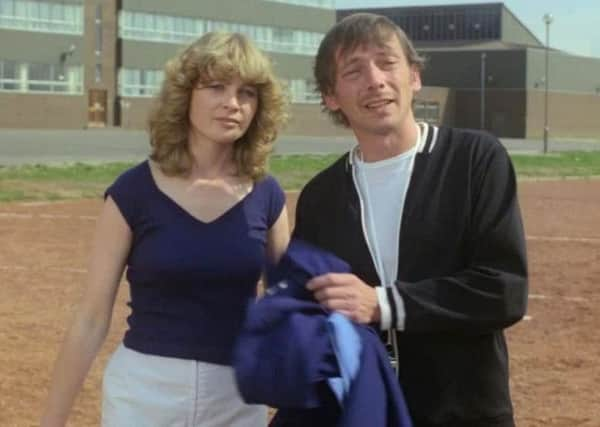Cameron Wyllie: How state schools could run extra-curricular clubs


When I started teaching in 1980 at what was then called Daniel Stewart’s and Melville College, the headmaster, Robin Morgan, interviewed me on the first day. He cut to the point very fast: “What will you do for us by way of extra-curricular activities?”
“Well,” I responded with a degree of nervousness, “I’m not really a sportsman.”
Advertisement
Hide AdAdvertisement
Hide AdThis was a considerable understatement. When I was a pupil myself, I had only represented my school once in any sporting arena – at curling, in the third team, because they were desperate. We lost badly and I was not asked back.
“I am very interested in debating,” I continued. “I debated at school and university.”
“Possibly,” said Mr Morgan, “but we are short of rugby coaches. We would make sure you were looked after by someone more experienced ...”
And so it was that for two school years I ‘coached’ rugby, under the watchful eye of Gilbert Parkhouse, who had played rugby for Swansea, as well as playing cricket for England in the 50s. Gilbert would explain the laws (never ‘the rules’) of rugby as he drove me to the school playing fields of a Monday afternoon, while we each got through a couple of Benson and Hedges. We took the bottom practice of S2 boys, usually about 50 of them, and I ran around, while Gilbert, whose running around days were quite over, shouted from the side.
There were many terrible, terrible moments that demonstrated my refereeing imbecility but the boys ran about and had a generally good time. After two years, my incompetence was certified, and I was allowed to take over the Debating Society, where I was more at home with the intellectuals and the weirdos.
Cut to 2018. School fees are going up and up but even in Edinburgh, with its huge range of private school options (I have no reason to doubt that Scotland’s capital has the highest proportion of privately educated children of any city in the world), people are still sending their kids in droves and the private sector is in pretty rude health.
Why is this? Well, I could suggest all sorts of factors, but one of them, quite definitely, is the range of extra-curricular (or ‘co-curricular’, as we must learn to say) activities. Private schools provide a package, and that package always includes lots of sports, various different musical groups, the Duke of Edinburgh Award, Combined Cadet Forces, drama, chess, public-speaking and clubs dedicated to the further study of say, politics or philosophy or robotics or, well, reptile-handling, in one particularly arcane example.
As I neared retirement, my school had clubs in things of which I had never heard – what is ‘Manga’? What was my response to be when a cheerful new colleague asked if she could run an amigurumi club? (“Yes, if it’s legal”. It turns out to be a form of Japanese knitting.)
Advertisement
Hide AdAdvertisement
Hide AdCurriculum for Excellence (CfE) demands that schools attempt to make their young people more rounded, more ready for the world at large – it wants them to be ‘citizens’ and ‘contributors’; it wants them to be ‘confident’ and ‘responsible’. No one can deny that these are worthy and necessary aims, but the approach, particularly in secondary schools, has been impractical and a misjudged use of classroom time.
Yet many people comment on the confidence and team spiritedness of young people from private schools. All parents want their children to be ‘well educated’, and that involves learning subjects in classrooms, learning how to study independently, and learning to find human qualities in yourself and develop them, with the help of caring professional people, and, of course, your parents. We are all in search of that ideal of young people – the ‘well-rounded’ boy or girl. I believe that the extra-curricular side of education is vital to that development.
In school session 1984-85, Scottish teachers went on strike and one of the actions they took was the abandonment of anything extra-curricular. In my own activity – having thrown away my track suit – competitive debating, entries to the main competition in Scotland plummeted from 150 to 25. Since then, the extra-curricular life of state schools has been patchy. Lots of dedicated colleagues throughout the country run football teams or help with the school musical or chair charity committees or organise hillwalks, but that side of school isn’t compulsory for teachers or students and huge numbers of young people aren’t involved in anything like that at school.
So here’s my suggestion to help young Scots achieve the laudable aims of CfE without sacrificing classroom time. Start paying staff who do any sort of extra-curricular activity more money – say five per cent more for a couple of hours a week: remember, almost all private schools pay their staff more, some explicitly for this extra contribution.
If current staff in state schools don’t want to do it, for reasons of time or inclination, that’s fine. However, new recruits to the profession should have to offer something (in exchange for increased pay) and the Scottish Government should set a target (they are very fond of targets) so that by, say, 2021, every child in Scotland has some form of extra-curricular life going on in school.
Then see their confidence, their team work, their leadership skills, their loyalty to their school, grow and grow in the way that Curriculum for Excellence wants.
And if funding this was a problem, well I would advocate a tightening of the belt at Education Scotland but, hey, that’s another story!
Cameron Wyllie’s articles also appear on his blog, called A House in Joppa
